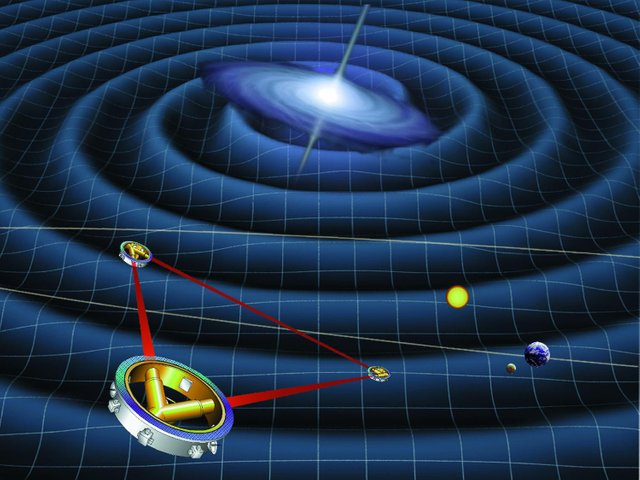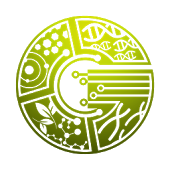[SPACE] LISA, the Laser Interferometer Space Antenna, enters next phase after great results from Pathfinder project
A few days ago I wrote about Gravitational Waves and how they have where detected by scientists on earth by large laser arrays, where the shift in oscillation of the laser enables them to witness the presence of a wave in space and time. Something that was predicted by Albert Einstein in 1916, but first detected in reality just a year ago.
While it's possible to witness this in observation stations on earth, multiple sources could distort and interfere with both results and source. There is a constant bombardment of human origins that we produce every day, as well as naturally occurring background noise. Both sources are hindering us from detecting the tiny changes in space.
Read my main article if you want to know more about Gravitational Waves
The solution
Build a laser guided observatory in outer space!
Demonstration of mission scenarios, made by Max-Planck-Instituts für Gravitationsphysik
LISA - The Laser Interferometer Space Antenna

Artist's conception of LISA spacecraft
LISA works on the same principles as the observation stations on earth, LIGO in US and VIGO in Italy, where they will use a laser. The laser beam will be used both for guiding and aligning the array, which would consist of three large crafts with various sensors, as well as for the research in detecting anomalies in space.
Even though there have been detections of gravitational waves by the ground-based stations since the start of this project, they are not detecting more than the "larger" waves in space due to external interference. The signal that LIGO found was around 100 Hz. A space station like LISA would be able to find waves up to 1 million times smaller, in the ranges of 0.1 mHz to 1 Hz.
When gravity shakes things around, these instruments detect these extremely tiny changes in space.
I would imagine that they could hear when God whispers when this goes live
Issues in Space
There are, of course, issue to overcome even in space. You need to test all the theories and all the instruments. Will the result be as predicted?
Scouting the grounds; The birth of LISA Pathfinder


Source: ESA LISA Pathfinder Video

Out-of-the-box results almost meets requirements of the large-scale LISA Project, without problems!
Source: NASA LISA Pathfinder Video
Source: NASA LISA Pathfinder Video
On 3rd of December 2015, ESA (European Space Agency) launched a pathfinder mission to scout the grounds for such a groundbreaking system. After ten years of planning, the craft had a successful launch, where it was placed in a low earth orbit by a Vega rocket, to further journey out in space to its designated L1 point, 1.5 million km from earth.
LISA Pathfinder is a single spacecraft, with all the instruments that would be available in the more extensive LISA array. During the Pathfinder mission, all devices on how to measure gravitational waves in space get tested in practice, which so far was only theories.
The Pathfinder spacecraft consists of a laser system together with two identical 46mm gold–platinum cubes, which are in constant freefall under the influence of gravity alone. The system will then stay shielded from all external forces, other than gravity.
The most significant complication to the building of such a craft was that the system that powers and navigates it outputs more interference than the ones they are trying to measure. But scientists have been confident and hard at work trying to make this system work, and it turned out to be a success.
The system has performed over expectations, at a rate of five times more accurate than predicted!
The LISA Pathfinder satellite received its last commands to power down on 18th of July 2017, after 16 months in space.
The Big Deal; Work on LISA launce begins


After the successful results of the Pathfinder mission, on 20th of June 2017, the LISA mission was approved for inclusion of ESA L3 mission. The work now begins on completing the three spacecraft for this assignment.
Consisting of one "mother" and two "daughter" ships, the array will orbit the sun in a trailing trajectory following the earth. With a distance of 1 million km, the vessel will align with each other with the help of lasers.
A second laser, sent along the guiding laser for practical reasons, well then perform guidance for the Gravitational Reference Sensor (GRS) that each unit has installed, enabling the measurements. The GRS also includes fibers for UV light injection for the photoelectric discharge of the test mass, a technology in direct heritage from the previous Pathfinder mission.
Think of the two units in the Pathfinder probe, but now three components, and now separated by a distance of 1 million km from each other! Pretty amazing.
Expected launch in 2034
As the mission is a large one, and much is to do before the actual start can take place, there will still be some time before we can see any results. The launch will take place in 2034.
Sources:
Join Gridcoin Research+BOINC and Change the World

BOINC (Berkeley Open Infrastructure for Network Computing, pronounced /bɔɪŋk/ – rhymes with "oink") is a distributed work platform that has been around since 2002 (15 years now) and rewards all participants with a score. BOINC consists of over 500,000+ active users and many more computers. It is a popular platform for researchers to do large amounts of distributed work. The infrastructure is already in place, and no payment is required. Doing distributed work is purely voluntary, where users can attach any project of their choosing.

Gridcoin Research is a Proof-of-Stake (PoS) cryptocurrency that rewards Proof-of-Research (PoR) for BOINC computation based on the BOINC RAC (Recent Average Credit) score. Some requirements are for projects to be listed on the platform but are relatively easy to comply. There are currently ~20+ Projects included that the network rewards work done by users.
Vote for me as Witness
Enjoy what I contribute to the community? Consider voting for my Witness on Steemit or BitShares. You can also vote for me as a Steemit Proxy Voter. On BitShares I would like to promote @fav as an excellent proxy.
By voting for me as a witness, you will support an active witness on Steem and BitShares.
Read my Witness Posts: BitShares, Steemit
The physics prospects of LISA are really exciting. In the meantime, on more closer a timescale, the improvements that will be done in LIGO and VIRGO are in principle as exciting as gravitational wave detection will become super frequent. We are really living an exciting time ^^
Indeed. Join einsten@home to help!
I can't wait to see what E@H will be able to do with this. As a cruncher for them for over 2 years, this is very exciting news!
No thanks. I keep my resources for my own research projects ;)
I said join and you join it . Or you meet the club. Is what einstein would had wanted.
Well, as I am a researcher myself, I use my ressources for my own research. I am not saying Einstein@home is not a good project at all, just that I have other interests :)
We truly are!
I will absolutely cover more about LIGO and VIRGO and their discoveries further. As they're soon to start up with even more accurate equipment I'm sure we'll see some amazing discoveries.
Wrote about them just the other day https://steemit.com/gridcoin/@sc-steemit/space-gravitational-waves-ripples-in-space-predicted-by-einstein-in-early-20th-centery
LISA is a very cool project, but very much on a longer timescale than other things :)
Thanks!
Yep I remember your older post (we also supported strongly with Steemstem :p), although I didn't comment it (sorry about that).
I am very curious about what these two experiments will do this year. 2017 was great. What about 2018 :)
Indeed
I think 2018 will be a good year ☺️
Thanks for your continued support.
Man this time lapses are huge. I really wish we could speed up on this one. Nearly everything done in space ends paying for itself back on earth, anyway
Yeah, the time it takes to prepare everything is massive. Then, I think that having this up and ready for launch in "just" 16 years is quick in comparison of what it is :D
Awesome Post As Always Good Work And Great Content :)
I know someone who's going to live in that observatory 🤓🤓🤓 💫✨nice post
nice posts.I will always follow up and vote. ☺️ please see my profile and vote